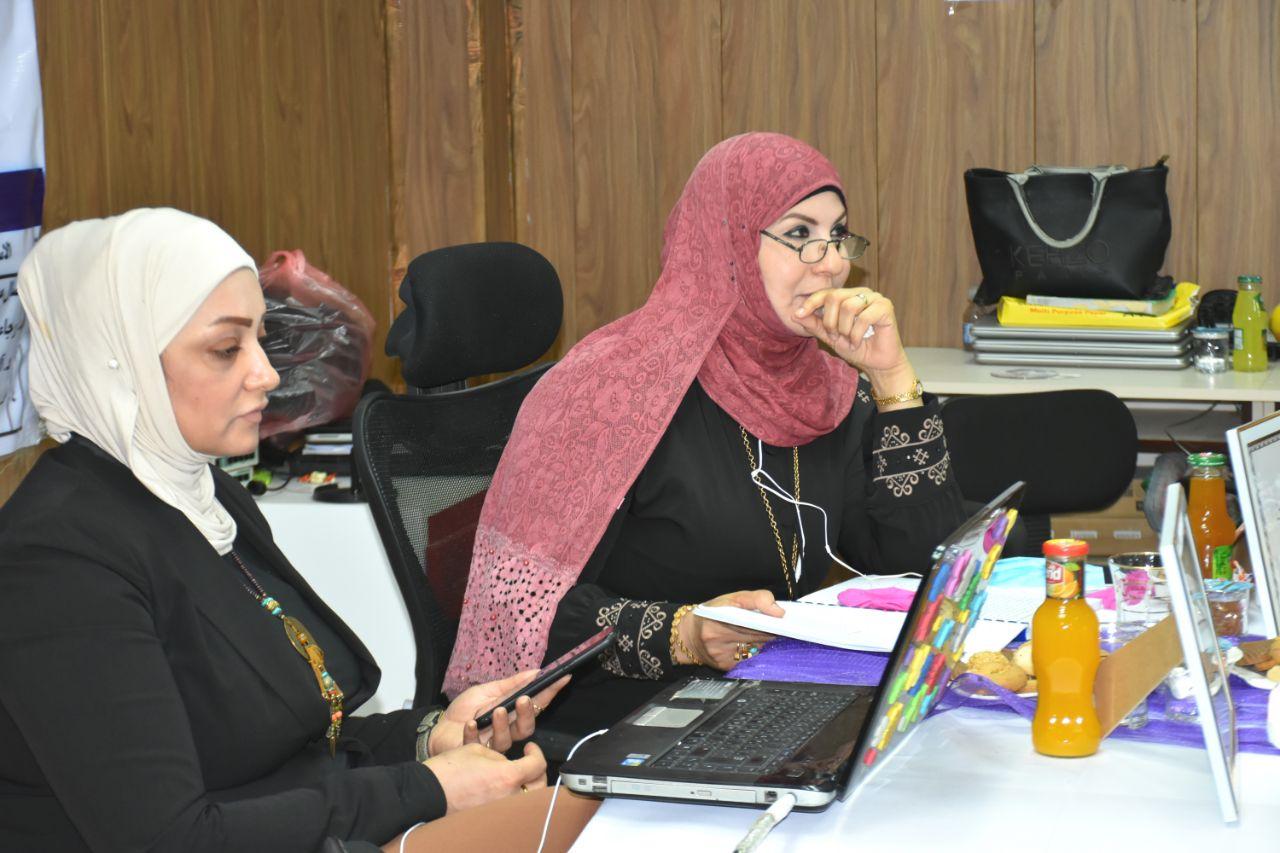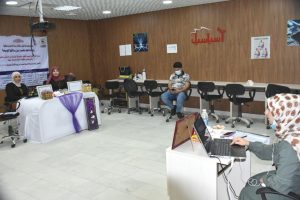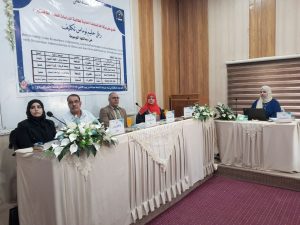The Faculty of Education for Pure Sciences at Kerbala University has discussed an M.A. thesis entitled (a diagnostic study of fungal flora isolated from local herbs and the effect of some plant growth organizations on them) and some members of the committee also communicated through the ZOOM platform.
The thesis, submitted by the student (Zahraa Majid Jassem), aims at purifying and diagnosing the fungi accompanying medicinal herbs in appearance and in part, and to calculate the percentage of frequency and the appearance of isolated fungi.
The discussion covers the test of the ability of isolated fungi to produce toxins, and the test of the ability of the hormone gibberelin and indole hormone steak to inhibit the growth of these fungi, as well as a study of the effect of some physical factors on the growth of isolated fungi.
The discussion shows that the emergence of many toxins producing fungi for local medicinal herbs, the isolates of the fungus Penicillium are the most visible and frequent of the isolated fungi. The optimum temperature for the growth of toxic fungi was 30-25 ° C. Also, these fungi can grow with a wide pH range between 4-9 and these fungi carry salt levels ranging from 1-5 PPT per 100 mm.
The discussion recommends conducting an integrated survey study for all types of medicinal herbs available locally to be an integrated picture of the fungi accompanying them, testing the effectiveness of other growth inhibitors on isolated fungi producing toxins, experimenting with the nanoscale method as a mix with growth regulators to give the best results in discouraging fungi accompanying medicinal herbs, doing With a histological study to test growth regulators inside the body (before infection and after infection with fungi), do a physiological study to find out the target tissues when infected with mycotoxins due to the use of infected herbs and know the mechanism of action of growth regulators inside the body.
































































